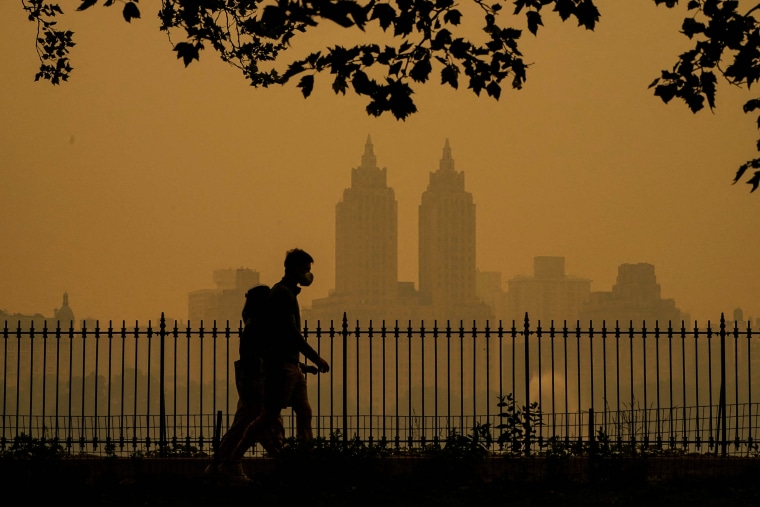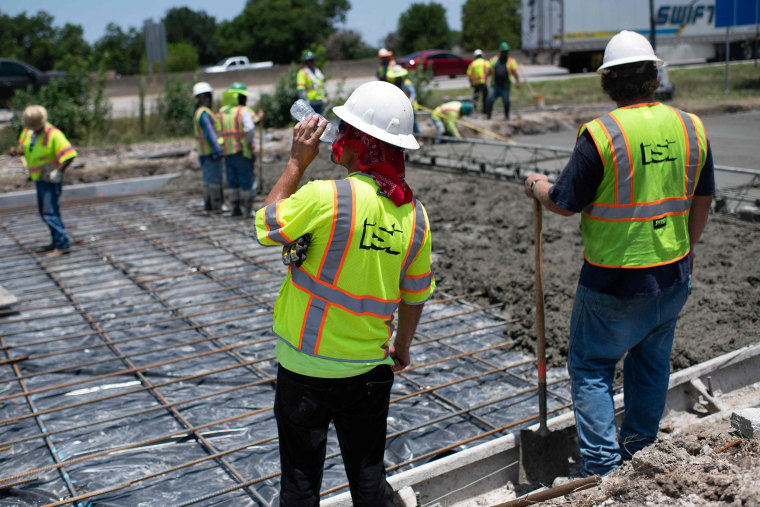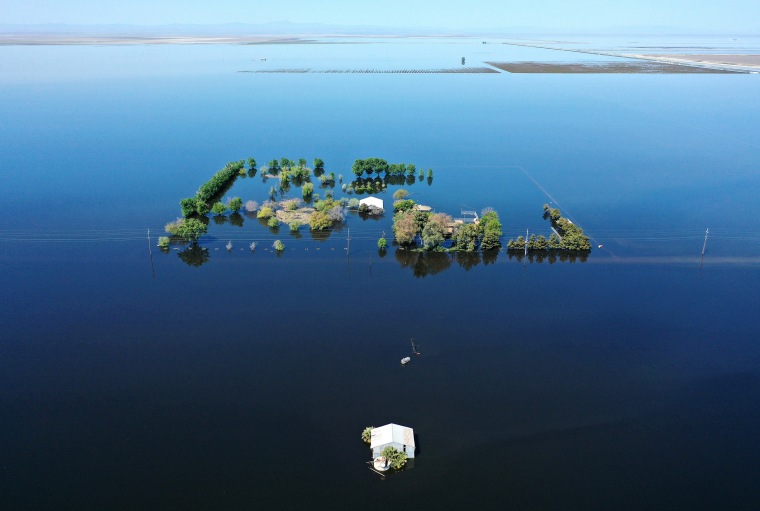The word of the summer is “extreme.”
Extreme flooding. Extreme heat. Extreme smoke.
Scientists have predicted a climate of extremes in report after report as Earth warms because humans continue to belch fossil fuel pollution into the atmosphere.
And now, it’s here — with a dizzying slew of broken records and heartbreaking scenes.
The images — a smoky Central Park in sepia, kayaks floating on the streets of Montpelier, Vermont, and packed cooling centers in Arizona — still provide a shock, even for those expecting them.
“All of this is entirely consistent with what greenhouse gas warming does and is in line with the trends we expect,” Ben Zaitchik, a professor in the Department of Earth and Planetary Sciences at Johns Hopkins University, said of the extreme events. “Still there’s something that feels surprising — emotionally surprising — when you see these things happening with increasing frequency and severity.”
Researchers have not yet calculated how much climate change has altered the odds of the specific weather events causing disruptions this summer. But scientists see the fingerprints of climate change sizzling across the landscape, and it’s playing out like a car wreck from which you can’t look away. The events have roiled communities in almost every region of North America, taken lives, damaged homes and stolen the simple pleasures of summer.
Here’s what stands out:





- Earth had its hottest recorded days for average global temperatures earlier this month, which some scientists believe is a sign that El Niño is taking hold and boosting temperatures on top of background warming from climate change.
- Sea surface temperatures have been record hot since mid-March. A prolonged marine heat wave is cooking waters off the coast of Florida, pushing ocean temperatures about 5 to 7 degrees Fahrenheit above normal, according to Brian McNoldy, a senior research associate at the University of Miami Rosenstiel School of Marine, Atmospheric and Earth Science. Waters off the Florida Keys recently hit record high temperatures. Oceans have absorbed about 90% of the heat trapped by greenhouse gases.
- Canada saw more acreage burned this year by wildfires than any other year on record. A record-smashing heat wave this spring primed northern Canada for the fires that have burned more than 37,000 square miles of land so far, according to the Canadian Interagency Forest Fire Centre. Scientists are predicting wildfires to increase in North America as temperatures warm and make fire behavior more likely. A buildup of fuels from fire suppression and forest management practices is also contributing to the problem.
- Canada’s wildfires have twice sent smoke pouring into the U.S. A Stanford University analysis found that it was the worst year of wildfire smoke exposure per U.S. resident since at least 2006, when the data was first available. More smoke is likely coming this summer.
- A heat wave centered on south Texas seared the state without respite for more than two weeks in June and early this month. Del Rio faced 18 straight days of temperatures above 100 F, according to National Weather Service data. Nighttime temperatures provided little relief. Climate change is shifting baseline temperatures, making heat waves more frequent and intense.
- Heavy precipitation pounded the Northeast earlier this week, flooding communities like Montpelier and dumping as much as 9 inches of rain on Vermont cities in a two-day storm, according to weather service data. Almost a fifth of the rainfall these areas expect in a typical year fell in two days. A warmer atmosphere can hold more moisture, which makes extreme rainfall more likely.
- The big melt of California’s snowpack flooded more than 110,000 acres of premium farmland in California, sinking tractors, electrical equipment and farmhouses. A dozen atmospheric river storms built a snowpack roughly three times as large as is typical this winter in the southern Sierra mountains. Because a warmer atmosphere can absorb more water vapor, atmospheric rivers are expected to grow stronger as the world warms.
- Phoenix officials said they were frightened for unsheltered residents as the city reported its 13th day above 110 F on Thursday as a prolonged heat wave cooked the desert Southwest, according to weather service data. The weekend forecast calls for high temperatures of 118 F in Phoenix. Death Valley, California, could approach 130 F.

In recent years, scientists have performed attribution studies to determine just how improbable a weather event would have been in the cooler climate of the past.
Scientists determined a June 2021 heat wave in the Pacific Northwest would have been “virtually impossible” if not for the impacts of climate change. A peer-reviewed study found the event would have been at least 150 times less likely if global temperatures had not warmed so much because of human activity.
This year’s events have yet to be so thoroughly analyzed. But scientists see the string of events as a part of a larger, undeniable pattern of extremes that’s intensifying over time.
“The individual drivers of these events — of course we cannot say anything about them right now — but in general, these are consistent with what we would expect,” Deepti Singh, an assistant professor in the School of Environment at Washington State University Vancouver, said of the record-breaking temperatures. “It’s not surprising that we’re seeing these concurrent widespread extreme heat events across multiple regions around the world.”
Temperature records are also falling outside North America. The “Cerberus” heat wave gripped Europe on Friday, with temperatures in Greece expected to near 110 F. The European Space Agency warned that Europe’s all-time high temperature — of 120 F — could be topped next week. Heat likely contributed to more than 61,000 deaths in Europe last summer, a recent study found. New daily rainfall records were set in Japan’s Kyushu region earlier this week, according to the World Meteorological Organization.
“It’s not just in isolated spots,” McNoldy said. “So many parts of the world are having records broken at the same time and they’re not just hit and miss. It’s not a day here, a day there — it’s prolonged.”
So far, the pace of climate change is outpacing most communities’ ability to manage.
“It causes me a lot of anxiety, the start of the summer season,” Singh said. “The fact we are seeing so many fatalities and such extreme impacts means we’re not prepared and we’re not adapted to the conditions we’re experiencing.”